 |
Life after the war: Gevorg Hambardzumyan23-year-old Gevorg Hambardzumyan, who suffered a severe brain injury, speaks with great difficulty, his hand does not work due to the brain injury, and walking has become difficult. After the war, during the rehabilitation phase, at the suggestion of a friend, he decided to continue training, but not in boxing, but in the field of para-arm wrestling. The former boxer returns to Armenia with laurels. He has more than 10 medals, which he won at the world and European para-arm wrestling championships. |
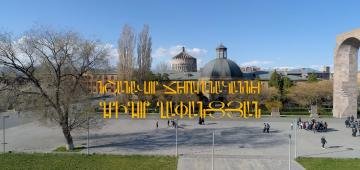 |
Grigor GhapantsyanJust three years after the closure of the Gevorgyan Seminary, the first state university of Armenia was opened. The vast majority of the teaching staff were former teachers of the seminary, and one of them was the linguist and Armenologist Grigor Ghapantsyan. In 1913, having rejected Nikoghayos Mar's offer to stay at the University of Saint Petersburg and work together, he returned to his homeland and entered the teaching staff of the Gevorgyan Theological Seminary. He immediately joined the group of Stepanos Malkhasyants, who was appointed Dean of the seminary, who was called upon to reform the educational programs of the seminary and write a new charter. He conducted his first serious studies at the seminary and published them in the journal "Ararat" of the Mother See. In 1918, with weapons in hand, he fought with Armenian clergy and scientists in the Battle of Sardarapat. He was the head of the Department of Linguistics of the newly opened State University, and the director of the Institute of Language of the newly established NAS. Some of the works written in Russian by the linguist who left behind a great scientific legacy have not been translated into Armenian to this day. |
 |
Sebastian Teachers' ChoirThe "Sebastatians" teacher's choir has been operating since 2012. The founder of the Yerevan State Chamber Choir, Honored Artist Harutyun Topikyan, was the conductor at the foundation of its formation. It is a four-part, open choir, composed of educators from the educational complex. The choir performs Komitas' spiritual and secular songs, medieval hymns, works by modern Armenian composers, and disseminates them through educational, cultural, and patriotic campaigns-concerts, educational liturgies, and organizing and participating in national rituals-festivals. |
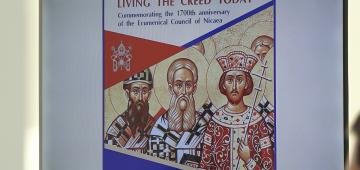 |
The Right Hand of Saint Aristakes, the Relic-Bearing Patriarch, was brought out to the Ecumenical ConferenceThe inter-church conference entitled “Living the Faith Today: Commemorating the 1700th Anniversary of the First Ecumenical Council of Nicaea” that began in the Mother See has concluded. A Sunday liturgy was held in the Mother Cathedral under the presiding authority of His Holiness the Catholicos of All Armenians. In celebration of the 1700th anniversary of the First Ecumenical Council of Nicaea, the relic-bearing Right Hand of Saint Aristakes, who participated in the Council on behalf of the Armenian Church, was brought out. |
 |
Aghitu Monument and Tanahat MonasteryThe Tanahat Monastery, or as the locals call it, the Red Monastery, is located 25 km southwest of Sisian, near the village of Arevis. Stepanos Orbelyan called the monastery a “great monastery of virtues,” where numerous legends about the holy life of ascetics and lay clergy were woven. During our trip, we also presented the unique monument of the 6th-7th centuries in the village of Aghitu. |
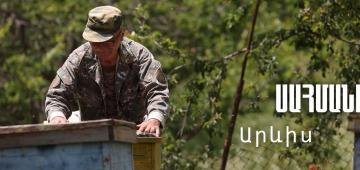 |
Arevis
The village of Arevis is located about 20 km from Sisian, but due to the poor road, it takes hours to reach the village.
Officially, Arevis has 41 residents, who live in the village intermittently, coming in the spring for agriculture and beekeeping. In the winter, barely ten residents remain in Arevis. Arevis is 4 km away from the enemy, but the reason the village has no residents is not at all its proximity to the border, but the lack of living conditions.
|
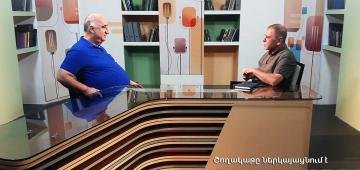 |
New Strategy for Education and Science: Part 214Together with education expert Serob Khachatryan, Hovhannes Yeranyan summarized the past academic year, discussed old and new issues of general education, and outlined the tasks for the new academic year. |
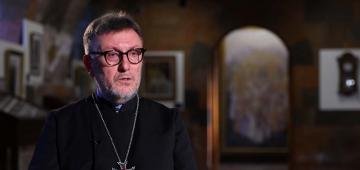 |
ToleranceWhat intellectual and spiritual knowledge and preparation is needed to demonstrate tolerance? What is the reason that modern society has become so intolerant, who is a tolerant person? These questions are examined from the perspective of Christian doctrine by Archimandrite Zatik Avetikyan. |
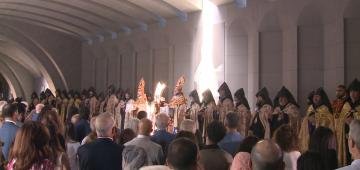 |
The Catholicosate Mausoleum and Candlelight Hall were opened under the auspices of His Holiness the PatriarchThe Catholicos' Mausoleum is located in the center of the structure, the right and left sides are intended for lighting candles. The structure also has two altars, which His Holiness consecrated and named after the apostles Thaddeus and Bartholomew. For the architects of the underground, vaulted structure, which occupies an area of about 1000 square meters, it was of fundamental importance to maintain the harmony of the modern structure with the historical structures existing in the area. The Eternal Catholicos of Armenia noted that the Mausoleum will remind future generations of the spiritual mission of all Armenian Catholicoses, which improved the national and church life of the entire Armenian people. |
 |
New Strategy for Education and Science: Part 213Hovhannes Yeranyan discussed the past, present, and future of music education in Armenia with the artistic director of the Komitas Conservatory's opera studio, People's Artist, and renowned soprano Hasmik Papyan. They also spoke about the singer's implemented and upcoming programs at the opera studio. |
 |
"Kadance" ensembleThe "Kadance" ensemble, which has a history of more than 20 years, has been reorganized, and a dance group has been added to the famous musical quintet. If in the beginning "Kadance" performed mainly the works of Astor Piazzolla, then over time the ensemble has expanded its performances to include works by European, American, Russian and Armenian classical and contemporary composers. From now on, "Kadance" will perform in a new way and in a new format. |
 |
Sisian: St. Gregory the Illuminator ChurchAfter the destruction of the Syunik principality of Shaghat and the monastery by Persian troops in the 360s, the Syunik monastery became the main sanctuary of the Syunik principality and until the 9th century was the episcopal seat of Syunik and the center of the ministerial dynasty. In the 80s of the 6th century, the Syunik princess Varazdukht built the St. Gregory the Illuminator temple on the site of the ancient temple of the monastery, which is now the visiting card of Sisian. |

